This letter to the editors originally appeared in the Chicago Tribune on April 10, 2023
Rage Against the Machine has been my music of choice since The Associated Press called the Chicago mayoral election for Brandon Johnson. A real modern-day “David vs. Goliath” battle in which one candidate, whom everyone wrote off in the beginning, built a grassroots base that hasn’t been seen since Mayor Harold Washington upset Chicago’s machine decades ago.
Two major themes from Johnson’s campaign rang through during his victory speech: a mayor for all of the people of Chicago and a city that works for its people. It is in this common cause that a path forward for resident-led, independent ward mapping should be achievable.
During election campaigning, 17 candidates who later won their aldermanic races and Johnson all resoundingly said that they support a new way to conduct ward remapping that puts Chicagoans ahead of special interests.
The incoming City Council members who stood up to support people-powered mapping are geographically, racially and ideologically diverse. From our city’s northern border in Rogers Park to its southern border in West Pullman, from democratic socialists to moderates and lakefront liberals, from members of the Black Caucus to the Latino Caucus, this coalition of elected officials can build support for a fair ward mapping process and have the best chance at uniting the city around equitable representation going forward.
The problem, as we saw with the last redistricting cycle, is that when self-interest and politics lead the process, it is residents and communities who are harmed. You don’t need a deep-dive analysis of the new ward map to see political retribution, such as the 36th Ward being strung across an industrial no-man’s land along Grand Avenue to capture parts of the West Town and Montclare neighborhoods.
The 2nd Ward no longer resembles a lobster, but it still lacks any coherent rhyme or reason that matches any of its communities’ needs. Englewood residents, for another decade, will have to work with five aldermen in order to advocate for their community in city government.
The People’s Map, an effort led by an independent 13-member resident commission, laid down a foundation for how an independent remapping process could be done in Chicago that centers people and communities first. It showed how communities could be brought together in an open and transparent process in which people are listened to and community members guide the map drawing.
We have seen similar independent redistricting models work in other major cities that have, by leaps and bounds, solicited more engagement and meaningful input from community members. If you don’t believe me, take a look at how the independent remapping process in Austin, Texas, worked and then compare that with what Chicago’s City Council disclosed about its remapping process. It’s not difficult to spot the differences.
Austin’s independent mapping process provided residents with more than 40 public meetings, which included language services and translation, to weigh in on the map proposal. That’s in stark contrast to the Chicago City Council’s 12 hearings, which catered exclusively to English-speaking residents. Austin’s independent commission issued a 55-page report detailing its rationale for district lines and how the public was involved before and after draft maps were released. Its process resulted in more than 400 pages of feedback from residents.
Only 80 people participated in the Chicago hearings, many of whom asked for more time for the public to be involved or simply tried to make sense of what actually happened rather than provide specific feedback on how wards should be shaped. Outside of vague rhetoric, the City Council didn’t give residents any information about why Chicago’s wards ended up the way they did.
It is time for those elected in 2023 to sit down with residents and advocates and build the policy solution that ensures a people-led mapping process is something from which future generations will reap benefits. Chicago’s new elected officials can unite the city by putting people in the driver’s seat for mapping.
When Lori Lightfoot ran for mayor in 2019, she promised she would back independent ward mapping. Instead of fulfilling that commitment, she put politics ahead of Chicagoans and made a political decision to publicly stay out of the remapping process. Johnson can succeed where Lightfoot failed and unite all corners of the city by leading a new effort, with a new council, to create a fair and community-driven ward mapping process.
As Johnson said in response to CHANGE Illinois’ candidate survey, “Now more than ever, it is absolutely imperative that we pass immediate redistricting reform and empower residents to participate in democracy in every way, shape, and form.”
Ryan Tolley is the policy director of CHANGE Illinois and the CHANGE Illinois Action Fund, which supported the creation of a resident-led redistricting commission that created the People’s Map in 2021.
